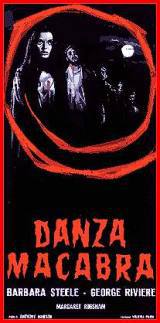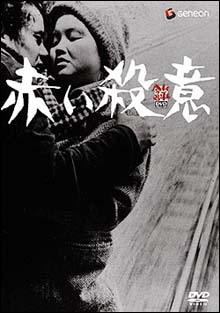
Πέμπτη 27 Αυγούστου 2009
DANZA MACABRA (1964, ANTONIO MARGHERITI)

Τρίτη 25 Αυγούστου 2009
UNDER THE FLAG OF THE RISING SUN (1972, KINJI FUKASAKU)

Κυριακή 23 Αυγούστου 2009
CLOSE ENCOUNTERS OF THE THIRD KIND (1977, STEVEN SPIELBERG)
NEW GRAVEYARD OF HONOR (2002, TAKASHI MIIKE)

Πέμπτη 20 Αυγούστου 2009
INTO THE BADLANDS (1991, Sam Pillsbury)

Δευτέρα 17 Αυγούστου 2009
THE BETRAYAL (1966, TOKUZO TANAKA)

Tokuzo Tanaka will most likely never be mentioned in the pantheon of Japanese directors. For someone who started out as an assistant director to Kenji Mizoguchi, he doesn't seem to have carved out his own niche or acquired those qualities that would mark him separate from the legion of bread-and-butter directors that slaved away in the Japanese studios of the time. Whatever passing popularity the most well known films in his oeuvre have enjoyed is mostly a byproduct of the marketable name franchises he worked in, yet THE BETRAYAL suggests
Πέμπτη 13 Αυγούστου 2009
INTENTIONS OF MURDER (1964, SHOHEI IMAMURA)

Also known as UNHOLY DESIRE, this marks my seventh Imamura film and my appreciation for this Japanese titan continues to grow unabated. To think Hollywood has only recently been appropriating what Imamura was pioneering back in the 60's and that Imamura's film has a scarce 195 votes on IMDB I believe is almost unethical. In the wise words of H.I. McDunnough* "there's what's right and there's what's right and never the twain shall meet". That a loveless housewife married to an abusive husband who cheats on her should fall in love with the thief who breaks in her house one night and rapes her and the resulting movie is neither played for laughs or reduced to hokey melodrama is a testament to the creative force at hand.Imamura's uncanny ability to find the absurd in the mundane, the blackly comedic in the serious and the humane in the bleak and hopeless, this curious heady mix, eccentric but not for the sake of it, with which the director as sympathetic anthropologist handpicks his characters from the lowest strata of society, observes their trappings struggles triumphs and follies (like the shots of mice running aimlessly inside their cage he uses in the movie - animals, which Imamura is always very keen to use as metaphor in his movies, if not very subtly), not with the detached amused air of the cynic (like the Coens tend to do), not as quirks to amuse a sophisticated intelligenzia too inhibited to even aknowledge those trappings in itself, but truthfully, honestly, with a hint of sadness but never without humour to admire their downfall when they succumb at the last to their animalistic desires.Beautifully filmed as usual, daring in its New Wave experimentation, its dynamic shots (the camera peering from improbable angles, through doorways, inside tunnels, along with moving trains), its great use of the widescreen canvas, its sound design. Recommended for fans of the director's work and anyone interested in Japanese New Wave cinema.
INSECT WOMAN (1963, SHOHEI IMAMURA)

Τετάρτη 5 Αυγούστου 2009
THE ELEPHANT MAN (1980, DAVID LYNCH)





